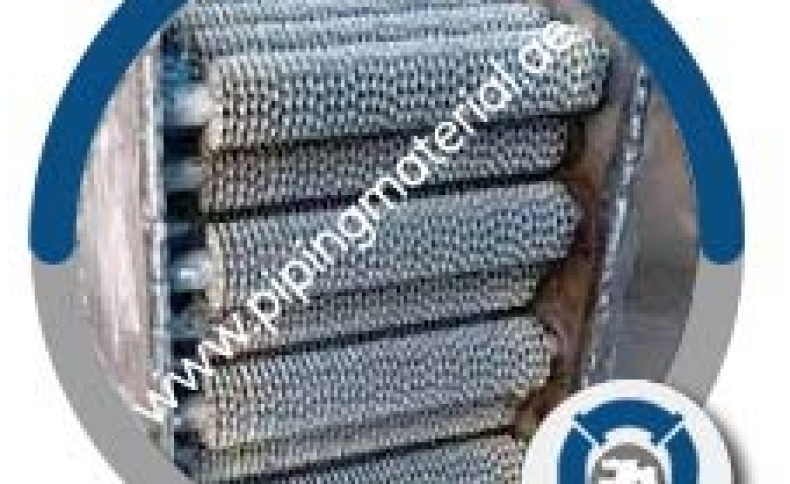Stainless steel fin tube
February 1, 2023 - 0 COMMENTS

-
How does a Stainless steel fin tube radiator work?
A stainless steel fin radiator uses the process of convection to move heat from the hot fluid (usually steam or water) flowing through the tubes to the air around it. The fins, usually made of stainless steel, are connected to the tubes to increase the tubes’ surface area for more effective heat transfer.
The hot fluid heats the air and the fins as it travels through the tubes. Once the air is heated, it rises and is replaced by new, cooler air warmed by the fins. Radiators continue to cool the fluid by transferring heat to the surrounding air.
Stainless steel fin tube radiators have several uses in commercial and industrial buildings, including process heating, HVAC systems, and space heating. When high corrosion resistance and reliability levels are essential, they are an excellent choice. Due to its greater corrosion resistance, stainless steel is a versatile material with many potential applications.
-
What is the purpose of using an SS fin tube in heat?
SS fin tube is used in heat transfer devices because of its high durability and resistance to corrosion. Stainless steel is resistant to pitting, rust, & erosion.
In heat transfer equipment, like fin tube radiators, the fins connected to the tubes enhance the tubes’ surface area, making it easier for heat to move from the fluid to the air. Stainless steel has several advantages for these fins, including:
Excellent thermal conductivity: The great thermal conductivity of stainless steel makes it a perfect heat transfer medium. As a result, the fin tube radiator performs better overall.
Maintenance-free: Stainless steel doesn’t need frequent washing or polishing because it’s so durable. Because of this, it is a budget-friendly option for use in heat-transfer devices.
Extremely powerful: Stainless steel is a robust material that holds well under intense heat and pressure. It makes the fin-tube radiator last longer and less likely to need to be fixed or replaced often.
Aesthetics: The sleek and contemporary look of stainless steel can elevate the overall design of a structure.
-
How many stainless steel condenser tubes are in a condenser?
A condenser usually comprises a series of tubes in which a coolant, such as air, water, or a refrigerant, is passed. A heat exchanger encloses the tubes, usually made of stainless steel. The size of the heat exchanger & the needed heat transfer capacity determines the number of tubes in a condenser.
The heat exchanger’s function is to move the heat from the heated refrigerant to the coolant, releasing the heat into the surrounding atmosphere. More tubes are needed to remove the heat if the heat transmission capacity must be increased.
The number of tubes can also be influenced by the condenser’s design. In a shell and tube condenser, for example, the tubes are lined up next to each other, while in a spiral condenser, the tubes are lined up in a spiral pattern.
Unlike shell and tube condensers, spiral condensers typically have fewer tubes. A condenser’s capacity and design determine how many stainless steel condenser tube it will have. The number might be anywhere from the hundreds to the thousands.
-
How many types of condensers are there?
A wide range of condensers is available in various commercial and industrial settings. The following are examples of the most common kinds:
Air-cooling condensers:
These condensers transfer heat away from the refrigerant by using air as the coolant. Small-scale applications often use air-cooled condensers because of their low water consumption and environmental friendliness.
A water-cooled condenser:
These condensers transfer heat away from the refrigerant using the water that serves as the coolant. Large-scale applications often utilize water-cooled condensers because they are more efficient.
Evaporative condensers:
These condensers transfer heat away from the refrigerant by using both water and air. Using an evaporative condenser is common when water is scarce, or water efficiency is a priority.
Tube and shell condensers:
These condensers are made of tubes enclosed by a heat exchanger. The tubes hold the refrigerant, and the heat exchanger contains the coolant.
Spiral condensers:
These condensers are made up of a series of tubes; however, the tubes, in this case, are arranged in a spiral.
Plate condensers:
To transfer heat, these condensers use a stack of plates. The coolant flows on one side of the plates while the refrigerant runs between them.
Microchannel condensers:
These condensers are made up of small channels that move heat from the coolant to the refrigerant. Since microchannel condensers are compact, they are often employed in low-volume settings.
-
How do I start importing SS condenser tubes in Qatar?
Several steps are involved in importing SS condenser tubes into Qatar. Therefore, preparation is vital. To ensure SS condenser tubes are imported into Qatar successfully, it is essential to know the rules, requirements, and procedures.
The steps required to import SS condenser tubes into Qatar include getting the correct permits and licenses, preparing documents, locating suppliers, setting up shipping, and more. You must also follow Qatar’s rules concerning importing SS condenser tubes. It includes rules about how things should be labeled and packaged and safety standards.









